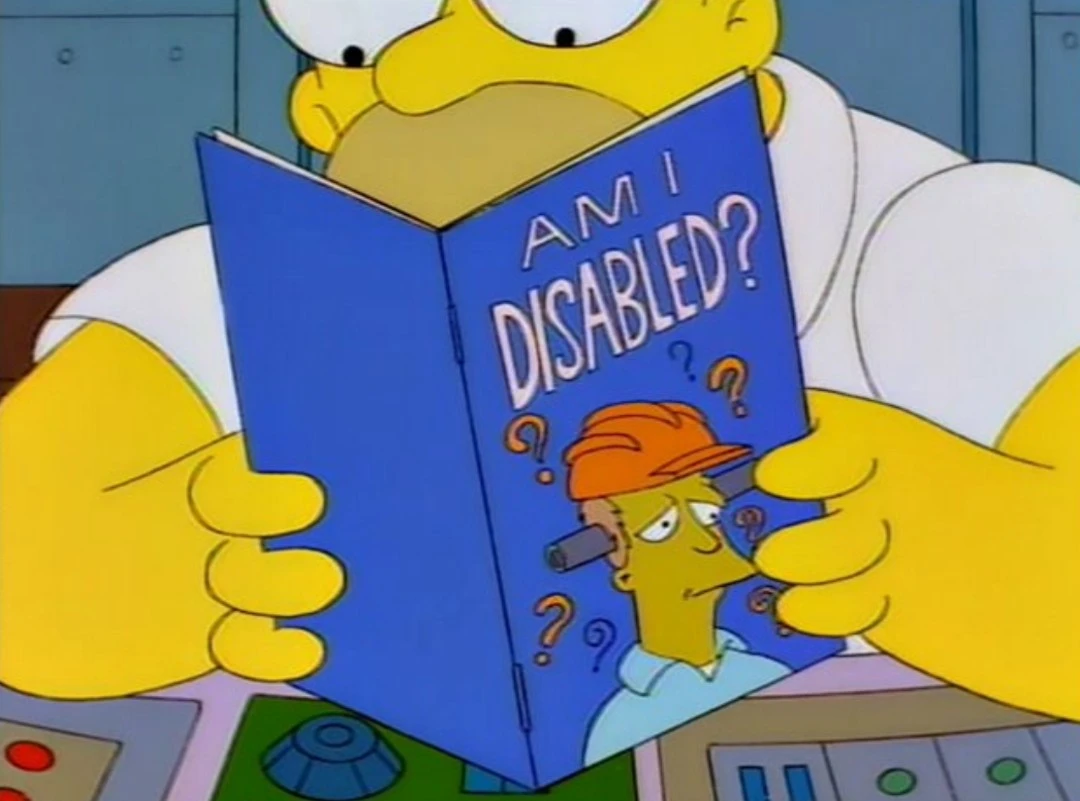Spoiler, its RDT
In case people do nto know what RDT is, which they really should if they have been into coffee for a little while as it makes a big difference:
RDT is Ross Droplet Technique, which is very much adding water to beans. Named after David Ross who came up with it back in 2005
This post is like 3 levels of coffee interest removed from mainstream. RDT is unknown outside of whatever small circle the listener is part of which does not overlap with other, known definitions of RDT.
This post is almost gatekeeping because of how much jargon and technobabble is required to know for this very specific subject. Hopefully you see the value in helping others enjoy your hobby and make any future explanation more open to new users!
For folks who make espresso at home, especially if you’ve worked with a manual grinder of any sort, this is extremely well known. In fact when you first get started and start searching for how to deal with the static problem (cause it’s the first major problem you’ll encounter), it’ll be what comes up. So for future scientists.
https://letmegooglethat.com/?q=how+to+remove+static+from+coffee+grinder&l=1
For the first result I get: https://www.javapresse.com/blogs/grinding-coffee/how-to-deal-with-static-in-coffee-grinders-3-tricks-you-can-try-at-home
Which as #1:
- Ross Droplet Technique
How does a static problem affect the taste?
I don’t understand how rdt leads to better tasting espresso. Maybe an easier cleanup session, but taste?
So espresso is very picky about measurements. 18g of beans into your grinder ideally yields 18g out. Not getting that amount of ground coffee out of the grinder and hence into your portafilter will heavily influence the taste.
Is there an acceptable margin of error? It’s wild to me that static would cause a difference outside of that margin.
Why not measure your grinds versus measuring your beans? Or, if you know how much you lose to static, could you compensate for that in your bean weigh?
These solutions seem easier than RDT.
if you know how much you lose to static
That’s the trouble, it didn’t get vaporized or vanish. It’s still in the grinder, or sticking to the collection bin. I’m not an expert or anything but I suspect that the residue oxidizing and mixing with the next batch will have more flavor impact than being a little off with your measurement.
This feels like it would have the biggest effect. Nice thinkin!
Honestly, is incredibly easy to spritz them when measuring, throw em in the grinder and be done.
I’ve never really read much on the actual effects of water on the coffee flavor itself, just the wonderful lack of static. I don’t screw with espresso as I’m at my limit for expensive hobbies. I have in the past and a half gram will make a noticable difference in a shot. Enough to ruin it? Completely subjective.
So the goal is to make your “ideal” shot for the beans you have. Reproducibly. So right off the bat if the ground weight out isn’t equal to the unground weight in (as close and reproducible as possible) then you’ll have to adjust other factors for each shot. Which can quickly become extremely complicated. Especially with static where the amount of loss is going to vary every time.
I do it for every grinder. Minimal retention = less cleaning.
I do it for every grinder. Minimal retention = less cleaning.
Yep. Those mornings I forget to introduce a bit of water I always kick myself because now I’m fussing with a brush for three times as long to get my manual grinder clean.
I find RDT to be more important with an electric grinder than a manual hand grinder.
Wow.
So what happened was that someone asked a question and while I answered the question someone else answered with a completely incorrect answer. My answer was then down voted and the incorrect one (which has since been edited to add in the right answer) upvoted.
So yeah, you are a bit late to the party here.
At not fucking point did I refuse to answer a basic question.
deleted by creator
Its an extremely basic beginner technique, one of a handful that any beginner should learn right at the start of their coffee journey. I would be embarrassed for anybody who has spent time in the hobby and not come across it as its been around since 2005 and is heavily promoted. Its regularly mentioned even tangentially in grinder reviews FFS.
If this had been a post to the technology or science communities I would have posting a more detail explanation as the audience cannot be expected to know much about the topic. However as this is posting to a specialist community I would have found it massively patronising to do so.
Assuming a specialist audience doesn’t know what you are talking about is worse than assuming they do. Its common for people who do not understand the context or detail in a post to ask for explanations, and they usually get answers across a wide spread of communities. Its also extremely entitled to act like a massive dick when asking a question and given the answer.
Edit: Ill also point out that the answer to what RDT is even if it doesn’t name it as such was also in the article linked, and its not a long or technical article. Very clear that the person in question didn’t even bother reading the article.
Spoiler - it’s RDT
How can it be a spoiler if we have no fuckin clue what RDT is? 😂
Well, in that case I suggest Lances video on this very paper: https://www.youtube.com/watch?v=GuqVUsMPs-U
deleted by creator
I’m continually amazed at the effort espresso drinkers put into making a coffee
Some of us are a hell of a lot lazier than that lol
That is not what RDT is for coffee beans, lol. RDT is Ross Droplet Technique, which is very much adding water to beans. Named after David Ross who came up with it back in 2005
Edit: post I replied to has now been edited to include the correct answer. The original answer was from chatgpt and completely incorrect so extremely misleading
Christ on a bike, how were we meant to know that?!? Is it too much trouble for you to type something out for us so we can understand you, without having to Google it?
Excuuuuse us for making you press some keys 😂
Shame on you for not guessing which 3-letter acronym was used! /s
You know, I remember in middle school learning the art of Google for research purposes and being amazed that I could find almost any information I could want in minutes. It was also in that time that I first encountered the “Let me google that for you” website that just takes text, shows a mouse moving over the Google searchbar, pastes the text, and then returns the search results. Seeing that made me realize I’d feel a fool if it had to be pointed out to me that I could google the answer to a basic question.
So to see someone acknowledge that they could take one minute to find the answer to what an acronym they don’t know, from a more reliable source than an internet stranger (like the gpt answer above), and then outright refuse to do so on the basis that the answer should have already been spoon-fed to them is frankly bizarre. I sure didn’t know what RDT was when I opened the thread, but just to make sure I wasn’t crazy after reading the threads here I typed ‘rdt coffee’ in my search bar and in less time than it took you to write your comment I had the answer.
I need to understand, what is the process behind your thinking here? Why do they need to explain a 20 year old coffee term in a coffee community that takes less than a minute to learn the basics of if you do the thing you think you shouldn’t have to? I’m really trying to understand without letting judgement seep in, I’m just at a bit of a loss here.
I am very surprised that anybody answering that question wouldn’t have been in the hobby long enough to not know what RDT is. Immediately downvoting my actual, factual link to both what RDT is and a deeper dive on the article to it says a lot.
There’s a pretty big difference between knowing an acronym for a new term about an old technique, and knowing about the technique itself. Anyone who’s lived through a winter knows that static is worse when things are drier. Brewers have added water to grain to improve grinding for ages. I’ve added a spritz of water to beans for a while, and it’s not because someone told me to, it was just common sense. This is the first I’ve ever heard it referred to as the RDT. You were down voted for being condescending about it
The issue here is posting chatgpt answers as fact without knowing remotely enough about the topic to know it’s garbage. I wouldn’t dare post answers on random topics I know nothing aboutusing chatgpt as my sole guide, its a proper dick move.
It’s been a part of the speciality coffee scene since 2005, and a big part of many recommendations to improve grinding. I would be surprised if anyone who has been an active consumer of coffee content hasn’t seen it used at least once.
No mate, the issue is someone having to use ChatGPT to try and figure out what you were talking about, simply because you were too lazy to type a phrase, causing this entire comment chain here.
If you’re communicating with other people, it’s frankly a tad rude to assume that everyone should spend some of their time working out what you’re talking about, rather than taking two seconds yourself to type clearly
This might sound harsh, but it’s good advice for the world in general, especially in a professional environment
deleted by creator
I wouldn’t trust that to tell me anything I didn’t already know the answer to, it is fucking useless as it still makes too many mistakes and lies about them
Not gonna lie, I’m starting to hate lemmy for having the most lazy users. You can literally google “coffee rdt” and the first five links explain in detail what OP is talking about. Meanwhile, they’re getting shit on for something he still ended up explaining anyways and even their correct explanation that people asked for is downvoted. It seems like nobody even read the article or has an opinion on it, they’re just mad that OP didn’t spoon feed them.
brew a nice coffee and ignore haters
You know what’s lazy? Not spelling out an acronym on first use.
As a espresso person I’m here mostly because the most popular espresso community on Lemmy is pretty dead.
I do really feel like we’d probably be better served if we posted espresso content in a espresso specific community.
RDT is useful for pour over as well, really helps improve majority of grinders and grind types.
True but I would believe the general level of enthusiasm for a conversation about RDT would be substantially higher in a modern espresso group vs filter coffee folk.
Also my previous comment is bit of a inner monologue as someone who posted very randomly detailed things on r/espresso back in the day and rather uncertain if/where I would post that stuff on Lemmy.
If it applies to both I would still post it here as the community is bigger and would still benefit from it. Even for basic stuff as there appears to be far more total beginners than the subreddits in the other place.
Hi there! Looks like you linked to a Lemmy community using a URL instead of its name, which doesn’t work well for people on different instances. Try fixing it like this: !espresso@infosec.pub
How does wet beans not gum up the mill?
You add a very very small amount of water. Like one spray from a tiny spray bottle.
If you make them that wet you are doing it wrong, lol.
You only need a drop or two of water for espresso and only slightly more for a larger amount of beans for a pour over, it’s a tiny amount. People have been doing this since 2005 without problems.
Check out: https://www.youtube.com/watch?v=GuqVUsMPs-U&t=2620s
If you don’t believe me
Ok, thanks. I’ve got a decent mill with a hopper. Would something as simple as suspending a damp sponge in the hopper be sufficient to raise the moisture content to reduce static charge or does it have to be physically applied to the beans to be effective?
I wouldn’t recommend that approach, its more suited to single dosing, which is based around grinding only the amount of beans you need for that single lot of coffee by only feeding the hopper with the amount of beans needed rather than using the hopper for bean storage.
So weighing out your beans first for a single espresso or pot of pour over, wetting those beans with a drop or two at most of water, giving them a shake/stir, then feeding them into the hopper and making sure everything comes out that you put in.
Single dosing makes it easier to get the exact amount of coffee by weight each time from cheaper grinders and can lower retention (how much ground coffee the grinder holds in its burr chamber and spout) when combined with RDT and flushing out the grinder with something like bellows and discarding what comes out as its mostly chaff and fines that you do not want. Coffee tends to build up even in expensive grinders without flushing it out, this goes stale over even a few hours and works its way into your normal cups of coffee.
Grinding by weight is still pretty limited availability, most with a hopper tend to offer grinding by time, which is nowhere near as accurate. Grinding by weight makes it easier to make your coffee more predictable, its especially important for espresso as you are trying to fill the basket almost but not quite the top. Espresso is better measured by volume as coffee density varies by roast type and by time since the beans were roasted, but that is much harder to do than by weight on a regular basis so most people just use weight.
That is a very detailed answer. Thank you.
Lol, always happy to help people who ask.
There are a lot of simple things, often free or low cost that people can do to get a lot more out of their existing gear, and the more people know that the better.
You’ve managed to convince me that I won’t do this. I am willing to trade slightly worse coffee for the convenience of simply pressing the button on my grinder.
And that’s a perfectly valid choice.
Beans and water quality >>>>> technique >>> grinder >>>>> espresso or pour over gear, for coffee quality anyway. You’ll get most of the way there just getting the first two right
Personally an extra minute a day isn’t going to kill me and I like tasty coffee. Modern home grinders are trending towards single dose anyway, so it becomes closer to the norm than hoppers that are better suited to commercial grinders due to the throughput of coffee beans they need.
I drink about 5 coffees a day, so the beans only stay in my hopper a little while. But yeah, my setup doesn’t make fantastic coffee but I know how to make it not terrible - and it’s a cost and convenience compromise I am happy with.
Whatever works for you.
I am too focused on getting the exact weight of grounds out to make my recipes exactly repeatable (and pretty much essential for espresso anyway), which is so much harder to do with the majority of affordable grinders, to even entertain using a hopper. Then the retention caused by not being able to use bellows and RDT shudders
I am only going through about a kilo of espresso and a touch less than that of pour over beans a month, so its not like I am high volume.
Not the science we asked for, but the science we need.
Its like they got sent back in time to 2005
They advocate for rdt over wdt as the most important? Interesting.
Wdt, for others in this thread, is a Weiss Distribution Tool. This is using a tool with some thin, flexible needles to break up the coffee after placing it in the portafilter.
I feel like if you do wdt without rdt, you’re fine. If you do rdt without wdt, you’re missing out.
Not sure if you have watched Lance’s video I linked elsewhere in the post but they measured particle size, RDT improved uniformity of particle size. This to me is the first empirical evidence of the actual benefit of RDT over and above less mess with grinding. For what can be a completely free and quick upgrade that seems always worth doing.
While WDT does need a tool and even a homemade one isn’t completely free it’s ability to better distribute grinds in the basket I would also say it’s an essential upgrade as it can be so low cost
Anything else like slow feeding, hot starting that are free upgrades no matter how small for cheap to midrange grinders that lack prefeeding augurs or other chokes that prevent overloading the burrs seem no brainers to me.
OK, I’m loading a spray bottle for tomorrow’s shot.
Even slightly wetting the end of your finger and stirring it through the beans can be enough to make a difference.
I use water for my filter grind. I have a measure cup for the beans. Then I use a wet teaspoon and stir it around in the measure cup. If I grind 10 grams the teaspoon is almost dry. If I grind 30-40 grams I have a solid water drop on the spoon. But it varies with the beans. Some beans produce more static and some less. If one or two beans get most of the water they will stick in the grinder. It’s also easier to keep the grinder clean when there is less small static particles flying everywhere.
Here is a link to the paper
My favorite part of that paper is that thanks to them actually measuring particulate size we now have empirical proof adding a small amount of water improves the consistency of your grind:
it is clear that the inclusion of even small quantities of water (as low as 5μLg−1) results in an immediate reduction in electrostatic aggregates of boulders and fines
Uh… yes, Mr. Science. We’ve been doing this for nearly 2 decades. But thanks, I guess.
Dear scientists, get the fuck back to working on saving the planet from boiling us alive k thx.










